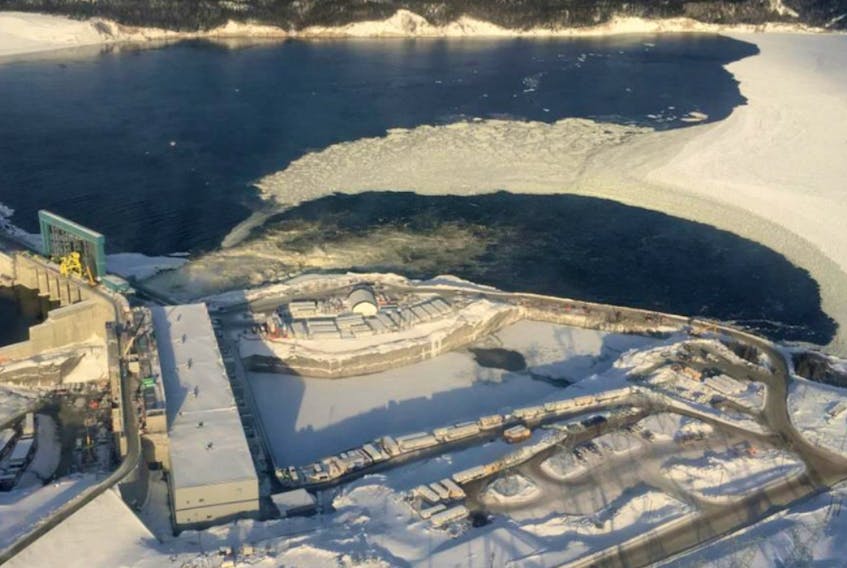Hindsight is 20/20.
But here we are in 2020, so let’s have a little look back at one of the key reasons for building Muskrat Falls.
Then, we were told we’d urgently need the power, and that, by 2015, we’d be seeing the potential for blackouts due to shortages of power. (It’s 2020 now, Muskrat Falls isn’t delivering power, but the threatened blackouts have not arrived.)

The reason for that? Expected power demand hasn’t materialized the way Nalcor predicted it would.
One of the latest supply and demand status reports filed by Newfoundland and Labrador Hydro with the Public Utilities Board shows a peak demand on Dec. 29 at 5:05 p.m. of 1,303 megawatts. But the report shows more than that — it shows that the temperature was -1 with a wind chill of -8.
Temperature and wind chill are important factors in electrical consumption, especially with a large number of houses with electric heat.
Go back to a similar day in 2014 (the first year that Hydro was issuing daily supply and demand reports) and find a day with a similar temperature and wind chill (Dec. 21, 2014, a temperature of -2 and a wind chill of -8) and you find a higher peak demand — 1,373 MW at 5:40 p.m. Or Dec. 24, 2014: a temperature of -1 and a wind chill of -7, peak demand 1,383 MW at 4:55.
In other words, most days we’re close to flat-lined right now, in terms of increased electrical demand. Some of that is because the economy is slow. Other reductions are because of technological improvements, and perhaps even belt-tightening as the price of electricity has risen.
But go back through December 2019, and the highest peak demand you can find is 1,564 MW on Dec. 16. Compare that with the month of December in 2014, where two days easily outshot 2019’s peak: Dec. 9 at 1,638 MW and Dec. 31 at 1,621 MW.
Most days we’re close to flat-lined right now, in terms of increased electrical demand.
There are other differences, too. In 2014, NL Hydro had an average available island daily supply of 1,850 MW, in normal circumstances.
Now, even without the LIL and Muskrat Falls on stream, NL Hydro’s available daily supply is 2,050 MW.
All of this becomes critically important when you look at one of the key underpinnings of the Muskrat Falls project from the very beginning: when Nalcor Energy was pushing for the project in 2011, they argued we were about to be in a power crisis.
The argument they made, among others, was that peak demand would rise in lockstep on into the future: from 1,519 MW in 2010, Nalcor argued that peak power consumption would rise in 2019 to 1,729 MW.
Through the examination of last winter’s NL Hydro’s daily supply and demand filings, consumption only crossed the 1,600 MW line 12 times. Two days did reach Nalcor’s predicted peaks — Feb. 21 and 22, with temperatures of -16 and wind chills of -28, and demand maxing out at 1,782 MW. (Keep in mind, though, NL Hydro had 200 more megawatts of power on hand every day than Nalcor had predicted in 2011 that it could have available. Even with consumption at 1,782 MW, NL Hydro didn’t issue a warning about the need to limit power usage.)
But even more startling is the difference in overall island energy usage. In 2011, Nalcor was predicting we’d reach 8,803 gigawatt hours on the island interconnected system by 2019.
They had predicted 8,732 GW/h for 2018, and we actually used 6,997 GW/h that year, less than was used in 2010. So instead of consumption growing, ours actually shrank.
In 2018, Nalcor changed its forecast, saying we won’t cross even the 7,000 GW/h line until 2028.
You can’t build a house on a bad foundation, and a lot of Nalcor’s foundational arguments have turned out to have been flawed. The project wasn’t delivered on time or on budget. Oil prices didn’t roar to the $200 a barrel level. North American electricity prices haven’t risen dramatically, making off-island sales of electricity more profitable.
And electrical demand inside the province has clearly not risen anywhere near the way it was predicted to do.
Things may change if the economy improves dramatically.
But right now, it’s tough to make the argument that we critically needed Muskrat Falls power, even with the age and condition of the three generating units at Holyrood. (And especially now that consultants to the PUB argue we’re going to need to keep Holyrood — or a replacement — around anyway.)
In fact, on the average December day, we are using less than two-thirds of the power we already had on hand.
Russell Wangersky’s column appears in SaltWire publications across Atlantic Canada. He can be reached at [email protected] — Twitter: @wangersky
MORE FROM RUSSELL WANGERSKY
• Don’t smoke ’em if you’ve got ’em
• Clash of the think-tanks








